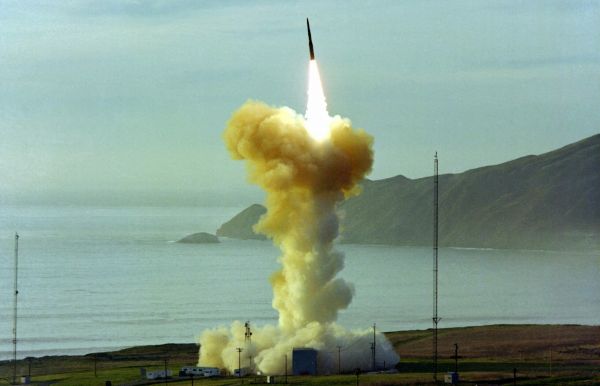February 15th that the website of American diplomatists published an article entitled “The Commander of the United States Intercontinental Ballistic Missile Wing Talks on the Reasons for Modernization of Nuclear Weapons” on February 13. The full text is extracted as follows:
On February 12, the commander of the 20th U.S. Air Force, which manages three intercontinental ballistic missile teams, wrote on the latest defense website, pointing out the reason why the United States should continue to modernize nuclear weapons in the face of a series of nuclear threats.
Major General Michael Luton stated in his article: “To be an effective deterrent, the nuclear forces of the United States must be modernized – including the capabilities of the Intercontinental Ballistic Missile Force, Bomber Force, Submarine-launched Ballistic Missile Force and Joint Global Command and Control System.”
Luton questioned those who believed that the continued progress of the United States towards nuclear modernization could trigger an arms race, saying that “the critics’ arguments do not match the facts”. He wrote: “The size of the U.S. nuclear weapons reserve is at its lowest level since the late 1950s, and the average age of warheads is older than at any time in history.”
The Trump administration has always attached considerable importance to the nuclear modernization efforts of the United States as part of dealing with great power competition and emerging nuclear threats.
In fiscal year 2021, the government’s proposed spending on nuclear weapons was close to $46 billion, a significant increase from the previous year. As part of the FY 2021 budget request, the Trump administration revealed its intention to build new nuclear warheads for sea-based missiles to replace existing nuclear warheads that need modernization over the next 15 to 20 years.
The U.S. government’s 2018 Nuclear Posture Review also advocated the use of low-equivalent “tactical” nuclear options. However, the Trump administration’s blatant contempt for the arms control treaty is bound to seriously disrupt the nuclear balance.
To be fair, some analysts point out that the 2018 assessment is not all wrong, and it is basically in line with the Obama administration’s nuclear modernization plan.
But the truth is that the Trump administration’s anti-compromise tone in the field of nuclear weapons — and the high cost that comes with it — is difficult to accept.
For Biden, his attitude towards nuclear modernization seems to be more cautious.
In 2019, Biden, who was still a presidential candidate at that time, responded to the questionnaire of the Council for a Survival World, and he explicitly denied that the United States needed to develop new tactical nuclear weapons.
Biden has a much more restrained attitude towards these weapons than Trump.
As Biden wrote in his answer to one of these questions: “The United States does not need new nuclear weapons.
Our current arsenal, supported by the Nuclear Weapons Reserve Management Program, is sufficient to meet our deterrence and alliance needs.” Asked about $1.2 trillion in the cost of modernizing and maintaining U.S. nuclear weapons over the next 30 years, Biden noted that his administration “will strive to maintain a strong, reliable deterrent while reducing reliance on and excessive spending on nuclear weapons.” Reports have consistently shown Biden may consider cutting Trump’s nuclear modernization plan.
The internal evaluation of the U.S. Department of Defense began in September 2020 shows that it will cost about $111 billion to modernize the U.S. intercontinental ballistic missile force alone.
Since taking office, the Biden administration has extended the New Strategic Arms Reduction Treaty with Russia for another five years and expressed its willingness to engage with Iran around the Joint Comprehensive Action Plan (Iraq.
the Iran Nuclear Agreement), which aims to impose strong restrictions on Iran’s nuclear weapons ambitions, while the Trump administration has held in 2 The agreement was withdrawn in 1918.
Still, it’s almost certain that the modernization of the U.S. nuclear arsenal will continue after Biden comes to power. It remains to be seen what his attitude towards the strategic weapons arsenal of the United States will be and what the price he can accept will be.



